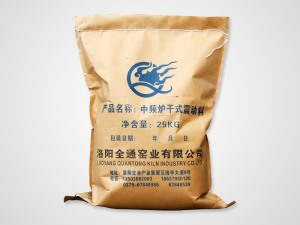What are the effects of smelting temperature on the composition of intermediate frequency furnace lining materials?
If the molten metal temperature is too high, the corrosion of the slag to the furnace lining will be aggravated, and the fluidity of the molten metal will increase to penetrate and penetrate the cracks, which will increase the chemical corrosion of the molten metal to the furnace lining. High temperature tapping and low temperature casting have always been the principles of operation. .But each casting has its own melting process requirements. When reaching a suitable temperature, do not seek excessive temperature, but observe and measure the temperature frequently. Let's learn more about it.
While trying to control the high melting temperature as much as possible, do not present the situation of long-term high temperature or heat preservation waiting for casting. Excessive temperature will not only easily burn the alloy, but also damage the furnace wall. At the same time, the energy consumption will also increase the influence of melting raw materials: The furnace lining has just been laid, and the furnace wall is not completely sintered. The first few furnaces should use relatively clean metal materials, and try to avoid materials with messy components, rust, and oily materials, especially oil-immersed scrap iron filings. Low melting point, flow Raw materials with good properties will aggravate the penetration of the furnace wall, and raw materials with high melting point require higher temperatures.
These all damage the life of the furnace lining, so it is more appropriate to arrange smelting in the middle and late stages. For other smelting different raw materials, attention should be paid to the characteristics of metal materials, such as iron with high sulfur content in the previous furnace, and high manganese steel in the next furnace. It is easy to cause furnace wall corrosion. The composition is messy, containing a lot of rust, oil stains, and uncleaned waste. The oxides formed by the returned charge at high temperature and high oxygen have a messy cross-dissolution effect, which is easy to form sticky slag and corrode The furnace wall will be loose and melted. The impurities brought in not only increase the energy consumption, but also affect the quality of the castings.

Previous: The effect and principle of batching use of intermediate frequency furnace lining materials
Related Industry Knowledge
- Features and Benefits of Coil Clay
- What are the advantages of a good furnace lining
- Misunderstandings in the use of ramming materials in intermediate frequency furnaces
- Phenomenon analysis of failure of argon blowing of ladle permeable bricks and how to improve the rate of argon blowing
- Where is the consumption reduction and energy saving of breathable bricks reflected?
- How to improve the service life of intermediate frequency furnace lining
- Reasons for damage to intermediate frequency furnace lining and how to solve them
- The performance and advantages of breathable brick
- Analysis of Structural Characteristics of Dispersive Breathable Bricks
- The intermediate frequency furnace charge knotting process needs to pay attention to details sharing
- The effect and principle of batching use of intermediate frequency furnace lining materials
- The conditions for the selection of intermediate frequency furnace lining materials
- Do you know these 5 aspects that affect the lining of the intermediate frequency furnace?
- Matters needing attention in the use of intermediate frequency furnace charge (2)
- Matters needing attention in the use of intermediate frequency furnace charge (1)
- The effect of using ramming material
- Features and Benefits of Coil Clay
- Common knowledge about coil cement
- What are the functions of coil glue?
- What are the common misunderstandings of ramming materials in intermediate frequency furnaces


